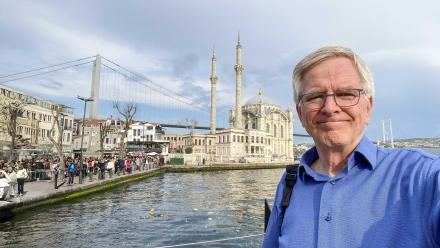
London: A Royal Tour
S13 E1310 - 25m 34s
Our royal tour of London starts with red-coat pageantry at Buckingham Palace. Riding red buses, black cabs, and the Tube, we pop into the Houses of Parliament at Westminster and visit Churchill’s underground war rooms — a World War II time warp. After looking into the eyes of those who put the great in Britain at the Portrait Gallery, we cruise the River Thames to the mighty Tower of London.

